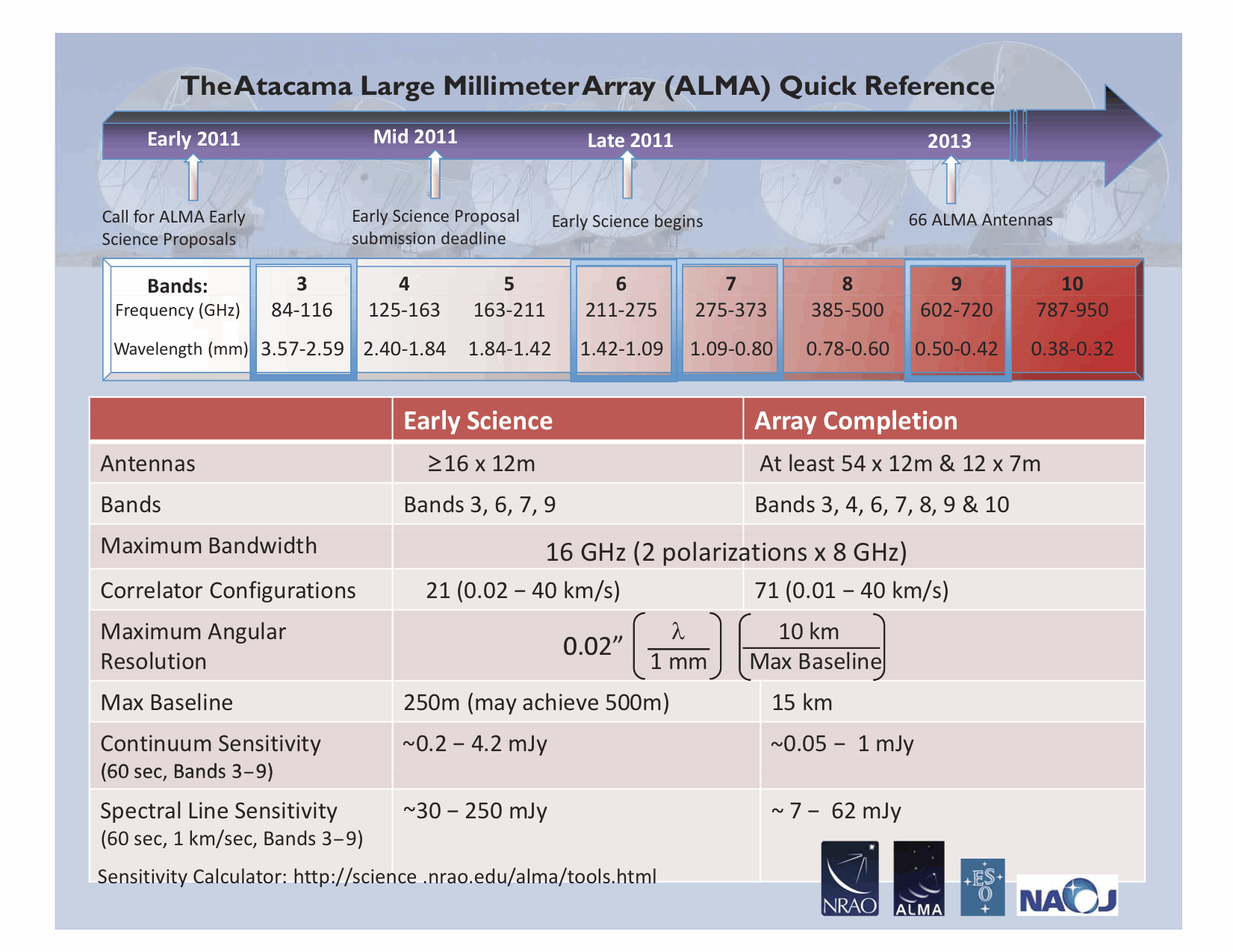ALMA Early Science
Early Science
The Atacama Large Millimeter Array (ALMA) will vastly increase the ability to observe astronomical sources at millimeter and submillimeter wavelengths. The increase in sensitivity and resolution at these wavelengths will enable investigations into the nature of the first stars and galaxies, directly imaging the disks in which planets are formed, and probing the energy output from active supermassive black holes in extremely luminous starburst galaxies.
When completed, ALMA will consist of 50 antennas in its main array and 16 more in the ALMA Compact Array. The array will consist of a variety of configurations, a large number of observing modes (standard interferometry, mosaicing, fast-switching, etc.) and complete frequency coverage of the mm/submm windows up to 1 THz.
Even before all of these capabilities become available, ALMA will be a powerful scientific instrument, exceeding the specifications of existing millimeter and submillimeter arrays. Astronomers will have the opportunity to make use of ALMA before its official Inauguration by applying for time as part of Early Science.
Early Science Capabilities
During Early Science, ALMA's capabilities will include:
- at least 16 12-m antennas in the ALMA array, yielding sensitivities ~10% of the full ALMA
- Wavelength coverage in Bands 3,6,7 & 9 (see ALMA Quick Reference below)
- Maximum baselines of 250m, yielding angular resolutions as fine as ~0.4" at Band 9
- Single-field imaging, and possibly small mosaics
- Up to 21 spectral/continuum (correlator) modes. The highest priority has been given to the modes shown in the table below. See the table below or ALMA Memo #556 for more information on correlator modes
- Bandwidths from 58.6 MHz to 2 GHz
Other modes and configurations may be made available and will be announced when the Call for Early Science Proposals is released (March 31, 2011). Users should consult the Call for Proposals issued by the JAO and ARCs for an exact description of what capabilities will be available.
In the meantime, prospective Cycle 0 proposers should consult the Early Science Cycle 0 Pre-announcement for ALMA details and timelines.
| Mode | Total Bandwidth | Effective Bandwidth | Number of Spectral Points | Spectral Resolution | Polarization |
|---|---|---|---|---|---|
| 7 | 2 GHz | 1.875 GHz | 3840 | 488 kHz | Dual |
| 9 | 500 MHz | 469 MHz | 3840 | 122 kHz | Dual |
| 12 | 62.5 MHz | 58.6 MHz | 3840 | 15 kHz | Dual |
| 18 | 62.5 MHz | 58.6 MHz | 1920 | 30 kHz | Full |
| 70 | 2 GHz | 2 GHz | 64 | 31.25 MHz | Full |
Below is an ALMA Quick Reference Table, which summarizes the ALMA timeline, the frequency/wavelength ranges of the ALMA bands, and the capabilities of ALMA during the Early Science and ALMA Inauguration phases:





Connect with NRAO